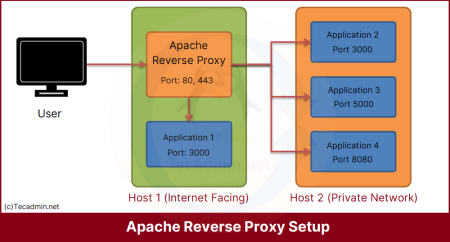While using WHM/cPanel, We can not make any changes directly in the Apache configuration file. This file is automatically created by cPanel templates and re-created on system reboot or WHM update. Any custom changes will be lost during the recreation of the Apache configuration file.
But If we want to add our own custom configuration in the Apache configuration of any website VirtualHost, We can do it by creating a configuration file at /usr/local/apache/conf/userdata/std/2_2/<username>/<sitename.com>/extra.conf.
In other versions, this location may change. So to find this location, check the website VirtualHost in the main configuration file, at the end of VirtualHost you will get a location like below
# To customize this VirtualHost use an include file at the following location # Include "/usr/local/apache/conf/userdata/ssl/2_2/myuser/mydomain.com/*.conf"
Adding Custom Settings in Apache cPanel
Now use the following commands to create a directory structure and configuration file. Change myuser with your actual cPanel username and change mydomain.com with actual domain name for which you want to add custom settings.
mkdir -p /usr/local/apache/conf/userdata/ssl/2_2/myuser/mydomain.com/cd /usr/local/apache/conf/userdata/ssl/2_2/myuser/mydomain.com/
Now create configuration file with any name but with .conf extension
vim extra.conf
Put your custom settings in extra.conf file and execute the following command from the shell. This command will uncomment the “Include “/usr/local/apache/conf/userdata/ssl/2_2/myuser/mydomain.com/*.conf” line in the VirtualHost of the main Apache configuration file.
/scripts/ensure_vhost_includes --all-users
And all done. In this way, you will not lose any custom changes for your VirtualHost.


2 Comments
HEllo,
Suppose i want to raise the proxytimeout of a vhost , in the /etc/apache2/conf.d/userdata/ssl/2_4/user/account/extra.conf i just add :
ProxyTimeout 30s ,
will it consider the change ? or i should add ;
SetHandler proxy:unix:/opt/cpanel/ea-php72/root/usr/var/run/php-fpm/9e52de05db715a5d60427be56982097f8f20f39c.sock|fcgi://testgo.mips.mu
ProxyTimeout 30s
Thank you for this post, I just wanted to expand on it. As you say, the reason the conf file you refer to is read by Apache is that it is Included from httpd.conf, e.g.:
ServerName servername.com
…
Include “/usr/local/apache/conf/userdata/ssl/2_2/username/servername.com/*.conf”
The ‘ssl’ in the conf file path refers to the fact that this is port 443 configuration and so is intended for . Requests to will look for config in /usr/local/apache/conf/userdata/std/2_2/username/servername.com/*.conf.
I believe the ‘2_2’ in the path refers to Apache httpd verion 2.2. If you are using 2.4 this part of the path may also change.
I hope this helps people running into this and trying something slightly different 🙂